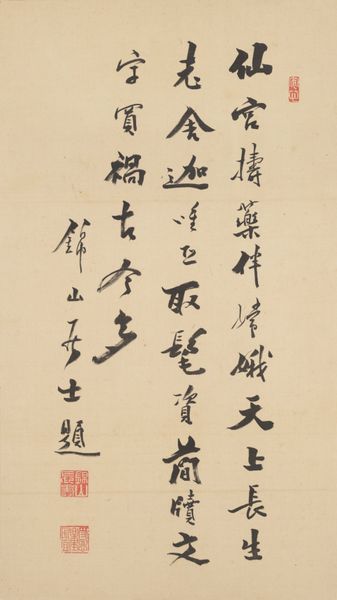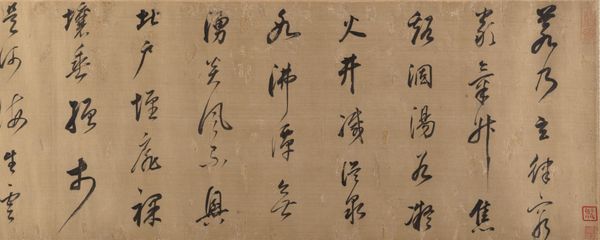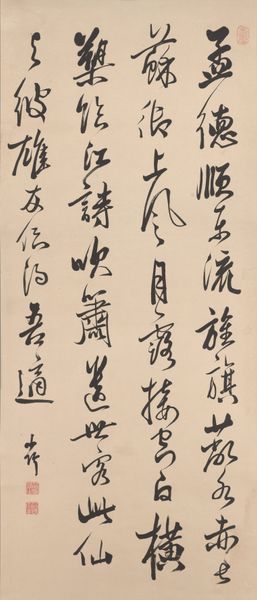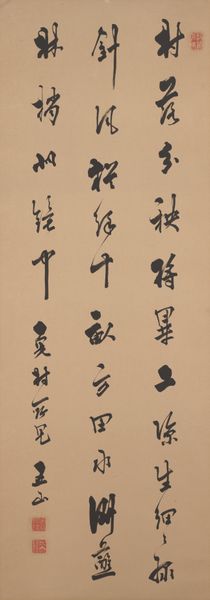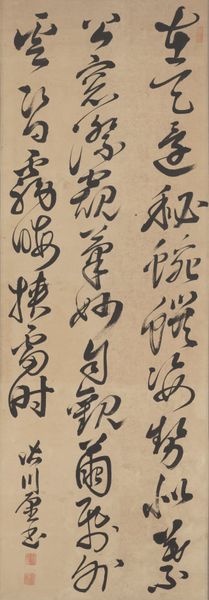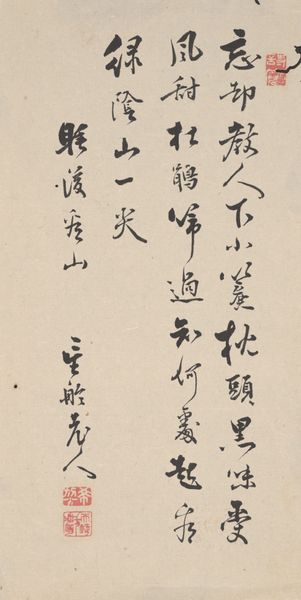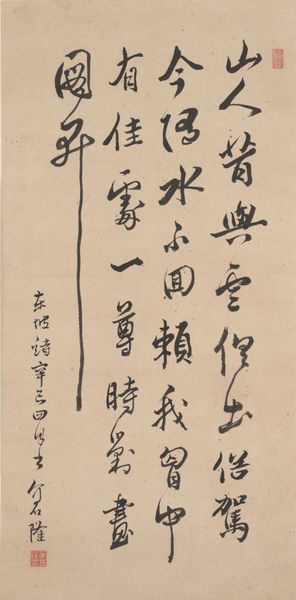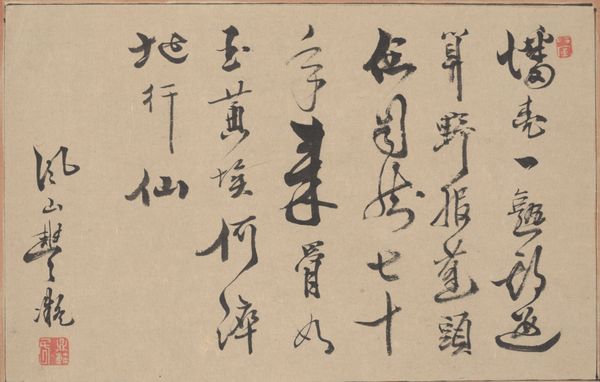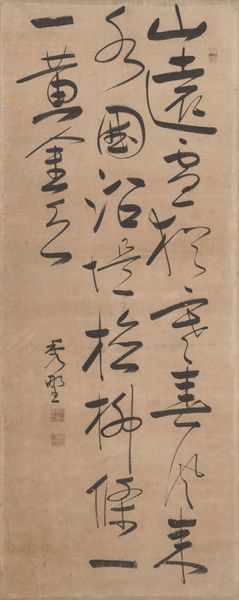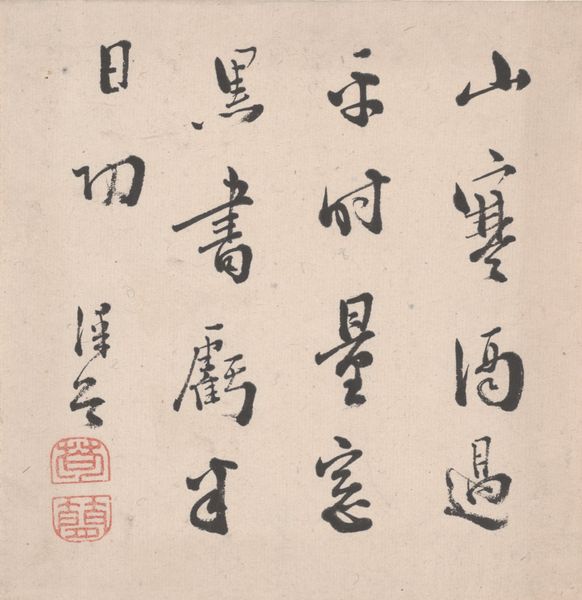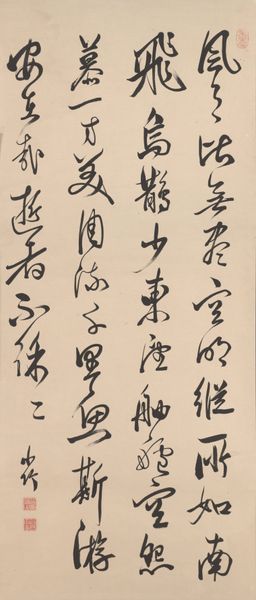
ink
#
hand-lettering
#
asian-art
#
hand lettering
#
ink
#
calligraphic
#
calligraphy
Dimensions: Image (each): 50 1/2 × 20 3/4 in. (128.3 × 52.7 cm)
Copyright: Public Domain
Gion Nankai created these calligraphic scrolls of Chinese poems in 18th century Japan, using ink on paper. Nankai was a Confucian scholar and artist and his work embodies the cultural exchange between China and Japan. Calligraphy, more than just writing, was considered a high art form in both countries, closely linked to painting and poetry. The ability to create beautiful characters with a brush was a sign of education and refinement, so these scrolls would have appealed to a sophisticated, intellectual audience. They reflect the influence of Chinese aesthetics and literature on Japanese culture during the Edo period, which was a time when Japanese artists and intellectuals looked to China for inspiration. To fully appreciate these poems, we can turn to historical texts, literary studies, and research into the social context of the Edo period. In doing so, we recognize that the meaning of art is tied to the cultural and institutional forces that shaped its creation and reception.
Comments
No comments
Be the first to comment and join the conversation on the ultimate creative platform.
